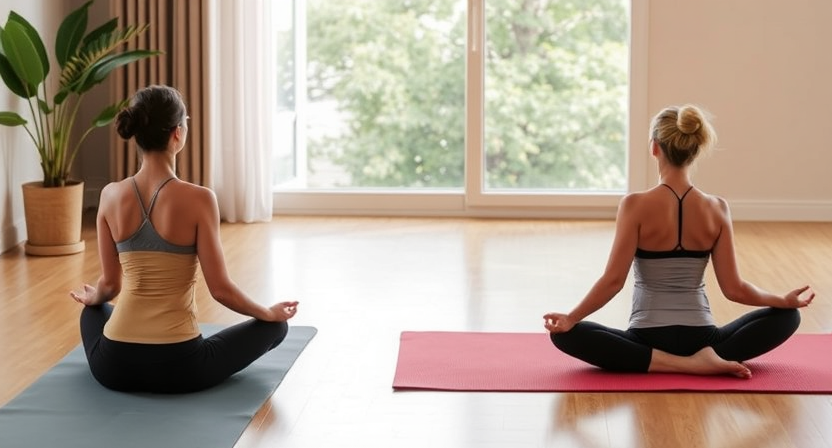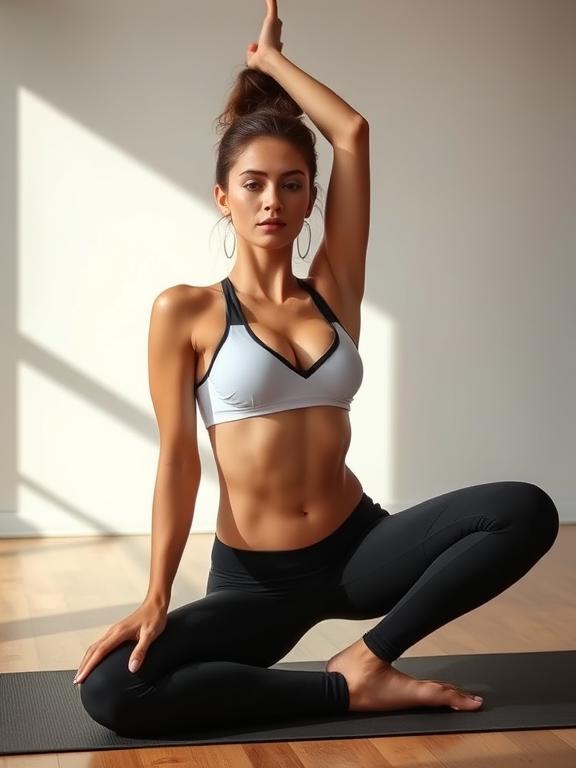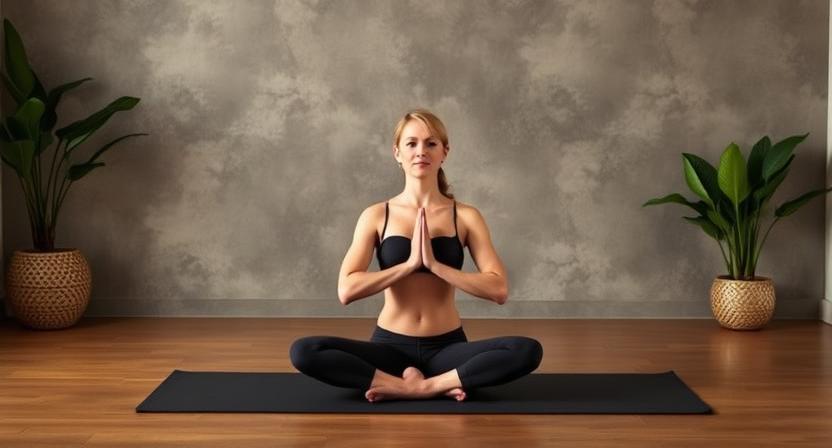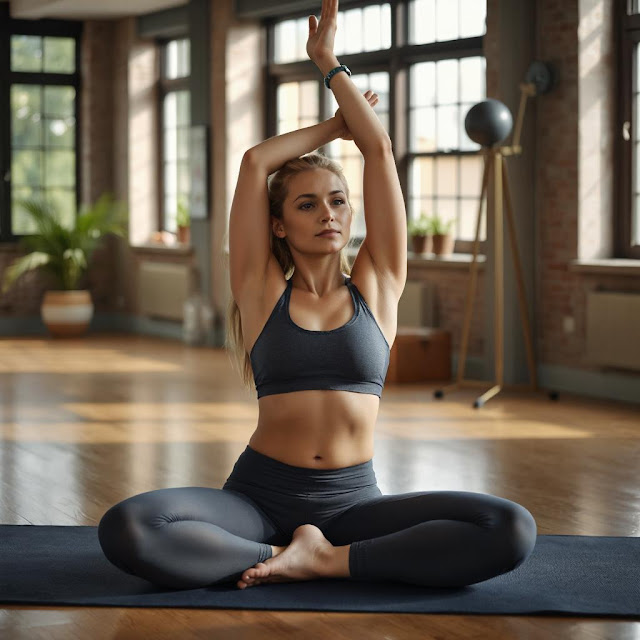Yoga is an ancient practice that promotes physical, mental, and spiritual well-being. As more people adopt yoga into their daily routines, the importance of certain tools, such as yoga mats, has grown significantly. A question that often arises among beginners and even seasoned practitioners is: Is it important to use a yoga mat while performing asanas?
In this blog, we will explore the reasons why using a yoga mat can enhance your practice, the types of yoga mats available, and some interesting facts you may not know. Let’s delve into the significance of yoga mats and why they’re essential for every yogi.
Why is a Yoga Mat Important?
A yoga mat serves as the foundation for your yoga practice. Whether you’re performing challenging poses or meditating in stillness, the mat helps you maintain proper alignment and balance. Here are some key reasons why using a yoga mat during your asanas is essential:
1. Provides Cushioning and Support
When practicing yoga, you’re often required to support your body with your hands, feet, and even forearms. The hard floor can lead to discomfort or strain, especially during poses that involve pressure on joints. A yoga mat provides cushioning, reducing the impact on your knees, hips, and wrists. This cushioning ensures that your joints stay safe and supported while practicing.
2. Offers Traction and Stability
One of the biggest challenges when performing yoga asanas is maintaining stability and proper alignment. Slippery surfaces can make it difficult to hold poses and can even lead to injuries. Yoga mats are designed to have a textured surface that provides the traction you need to stay in place. Whether you’re performing standing poses or seated stretches, the mat ensures your feet and hands won’t slip.
3. Defines Your Practice Space
A yoga mat helps create a dedicated space for your practice, which can be especially helpful in group settings. It helps you stay focused and creates boundaries that allow you to center yourself during practice. This is an important mental aspect of yoga, as having a personal space signals to the body that it’s time to connect and be present.
4. Hygiene and Cleanliness
When practicing yoga in a studio or even at home, it’s crucial to have a clean space. Using a yoga mat ensures that you are not directly touching the floor, which can harbor bacteria and dirt. The mat acts as a barrier between you and potentially unhygienic surfaces. Many mats are also easy to clean, which makes them an ideal choice for regular use.
5. Prevents Injury
As you deepen your yoga practice, your body becomes more flexible and stronger. However, performing advanced poses without the right support can increase the risk of injury. A yoga mat helps prevent unnecessary strain on your muscles and joints by providing the right balance of cushioning and stability. It ensures that your body stays aligned and safe throughout your practice.
Types of Yoga Mats
Yoga mats come in various types, each designed to meet the unique needs of different practitioners. Here are a few of the most common types of yoga mats:
1. PVC Mats
These mats are the most traditional and affordable option. PVC mats are durable, lightweight, and offer a good level of traction. However, they are not the most eco-friendly choice due to the chemicals used in their production.
2. TPE Mats
Thermoplastic elastomer (TPE) mats are an eco-friendly alternative to PVC. They are made from recyclable materials and are free from harmful chemicals. TPE mats are lightweight, durable, and offer excellent grip.
3. Natural Rubber Mats
Rubber mats are a popular choice for environmentally conscious practitioners. These mats are made from natural rubber, offering excellent grip and durability. They are also biodegradable and free from harmful chemicals.
4. Cork and Jute Mats
Cork and jute mats are natural alternatives made from renewable materials. These mats offer a firm grip and are more durable than traditional cotton mats. They are ideal for practitioners who want a sustainable option for their yoga practice.
5. Cotton Mats
Cotton mats are softer and more lightweight than rubber or PVC mats. They are often used in restorative or gentle practices and are easy to clean. However, they may not provide the same level of traction as other materials, making them more suitable for slower-paced practices.
Interesting Facts About Yoga Mats
You may be surprised to learn that yoga mats have an interesting history. Here are some fascinating facts about them:
1. The Origin of Yoga Mats
Did you know that yoga mats weren’t always used? In the early days of yoga, practitioners would practice directly on the floor, often using blankets, cloths, or rugs for cushioning. The invention of the modern yoga mat is credited to a German woman named Jade Li, who created the first rubber yoga mat in the 1960s.
2. The Color of Your Yoga Mat Matters
The color of your yoga mat can influence your practice. For example, green mats are said to promote relaxation and balance, while purple mats can boost energy and creativity. The color you choose can set the tone for your practice and affect your mindset.
3. The Importance of Thickness
The thickness of your yoga mat plays a significant role in your comfort and alignment. Standard yoga mats are typically about 1/8-inch thick, but there are thicker options available for extra cushioning. If you’re doing high-impact yoga or have joint concerns, consider investing in a thicker mat to provide more support.
Conclusion
As you can see, using a yoga mat is not just about comfort – it’s an essential tool that enhances your practice by providing support, stability, and hygiene. Whether you’re a seasoned yogi or just starting your journey, investing in a high-quality yoga mat can make a significant difference in the quality of your asanas.
Choosing the right yoga mat depends on your needs, preferences, and the type of yoga you practice. From providing extra cushioning to improving stability, a yoga mat is a vital accessory that ensures a safe and effective practice. Don’t overlook this simple but powerful tool!
For more tips and advice on improving your health and fitness, be sure to visit Top Health Coach – your ultimate resource for all things health-related!



